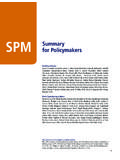Transcription of Executive Summary Key Findings - FATF-GAFI.ORG
1 Anti-money laundering and counter-terrorist financing measures in Denmark 2017 3 Executive Summary 1. This report provides a Summary of the anti-money laundering and combating the financing of terrorism (AML/CFT) measures in place in the Kingdom of Denmark as at the date of the on-site visit (2-18 November 2016). It analyses the level of compliance with the FATF 40 Recommendations, the level of effectiveness of Denmark s AML/CFT system, and provides recommendations on how the system could be strengthened. Key Findings overall , Denmark has a moderate level of understanding of its money laundering and terrorist financing (ML/TF) risks; with TF risks being better understood by authorities.
2 Denmark s assessment of ML risk is comprised of a number of sectoral risk assessments, which underpin the ML national risk assessment (NRA). The TF NRA was separately prepared. The NRAs were not conducted in a coordinated, whole-of-government manner, and suffered from several methodological deficiencies in terms of inputs, design and scope. Denmark does not maintain comprehensive statistics on matters relevant to effectiveness and efficiency of their AML systems, and this negatively impacted the ML NRA. overall , while some risk-based actions have been taken in response to the NRAs, it is limited and variable and does not adequately correspond to the risks identified.
3 Denmark does not have national AML/CFT strategies or policies. The objectives and activities of individual competent authorities are determined by their own priorities and are not coordinated. Coordination and cooperation tends to occur informally and on an ad hoc basis. The effective functioning of the Money Laundering Secretariat (MLS), Denmark s financial intelligence unit (FIU), is hampered by its lack of human resources and operational autonomy. Denmark has a handling of stolen goods offence that extends to all criminal proceeds thus encapsulating the laundering of all predicate offences.
4 Based on Danish legal tradition, the offence does not cover self-laundering. In practice, the police focus on prosecuting the predicate offence and information provided suggests that serious ML is not actively pursued. As the ML offence also includes traditional handling of stolen goods, it is not possible to obtain separate data on ML. The criminal penalty of years of maximum imprisonment for ordinary ML is not fully proportionate or dissuasive, and though aggravated ML carries a higher penalty of six years, the average of penalties imposed in practice were low and in many cases resulted in suspended imprisonment.
5 4 Anti-money laundering and counter-terrorist financing measures in Denmark 2017 Executive Summary Denmark has a robust legal framework for investigating and prosecuting TF. Every counter-terrorism investigation includes an investigation into potential TF. Between 2011 and 2016, Denmark indicted 16 persons with TF offences, resulting in seven convictions. This appears to be in line with the TF risks of Denmark. The maximum penalty for TF is ten years imprisonment. However, in practice, more lenient sanctions are applied, which limits the dissuasiveness of the relatively high sanctions.
6 Denmark has a legal system to apply targeted financial sanctions (TFS) [both TF and proliferation financing (PF)]. Implementation of TFS related to UNSCR 1267, 1988, and 1373 (and their successor resolutions) has technical and practical deficiencies due to delays at the European Union (EU) level on the transposition of designated entities into sanctions lists and the absence of any specific measures to freeze the assets of EU internals. Understanding and implementation of TFS by reporting entities is varied and limited, particularly outside the banking sector. With a few exceptions, TFS knowledge and compliance by designated non-financial businesses and profession (DNFBPs) is poor.
7 There is some, but insufficient, compliance with obligations by reporting entities. There is limited monitoring of TFS compliance by supervisory authorities. overall , there is an inadequate understanding of risk and weak implementation of AML/CFT measures in almost all segments of the financial sector. With the exception of casinos, DNFBPs understanding of risk and implementation is also generally poor. The legal framework of preventive measures also includes a number of gaps which negatively impact the effectiveness of the system. With the exception of the casino sector, a risk-based approach to AML/CFT supervision is limited, and where it exists is in the early stages of implementation.
8 Further, the frequency, scope and intensity of supervision are inadequate. There are also serious concerns related to the severe lack of resources available for AML/CFT supervision in Denmark. The range of supervisory powers to enforce compliance and sanction breaches are insufficient, with referrals to police for investigation and prosecution being the principal used to ensure compliance by financial institutions (FIs). The sanctions that have been applied are not proportionate and dissuasive. Denmark s extensive system of registers, for both natural (CPR) and legal persons (CVR) provides a solid foundation for obtaining ownership and other information.
9 Beneficial ownership information is relatively easily traced through the Central Business register (CVR) in less complicated structures and where no foreign ownership or control is involved. In these cases (complex and foreign ownership), competent authorities have to obtain beneficial ownership information from FIs/DNFBPs (where the legal person is a customer). However, implementation of AML/CFT measures, including with respect to beneficial ownership, is generally weak. New legislation enacted in 2016, and coming into force in May 2017, will require all legal persons to obtain and hold beneficial ownership information and make it publicly available through the CVR, and this will significantly strengthen the ability of authorities to obtain beneficial ownership information in a timely way.
10 Denmark has a sound legal framework for all forms of international cooperation. Where there is an absence of a legal framework to provide legal assistance, authorities apply Danish legislation by analogy. Anti-money laundering and counter-terrorist financing measures in Denmark 2017 5 Executive Summary Risks and General Situation 2. The Kingdom of Denmark consists of Denmark, Greenland and the Faroe Islands. The total annual ML potential in Denmark is estimated by authorities to be approximately EUR billion, comprising of proceeds from drugs, human trafficking, car theft, robberies, arms trade, smuggling of tobacco and liquor, tax and excise duty fraud, and other economic crime.













